DATA TO SUPPORT OPERATION AND MAINTENANCE DECISSIONS


George Borst
Business Development Lead
November 09, 2023
INDUSTRY 4.0, EQUIPMENT DATA, SMART FACTORY, DIGITAL TRANSFORMATION

A TYPICAL WEEKDAY
Envision a typical weekday, where one of our valued customers urgently contacted us, alarmed by a high-stakes problem they are facing. Their situation is on the edge of a potential unplanned stop. FOCUS-1, the controller of their system, exhibited signs of instability, putting the smooth operation of their boiler at risk. Despite FOCUS-1’s throttle set wide open at 100%, it was barely delivering 65 m3/h instead of its usual robust range of 100 m3/h. The customer pointed towards FOCUS-1 as the problem maker but less seemed to be true when the information of FOCUS-1 pointed out the real issue.
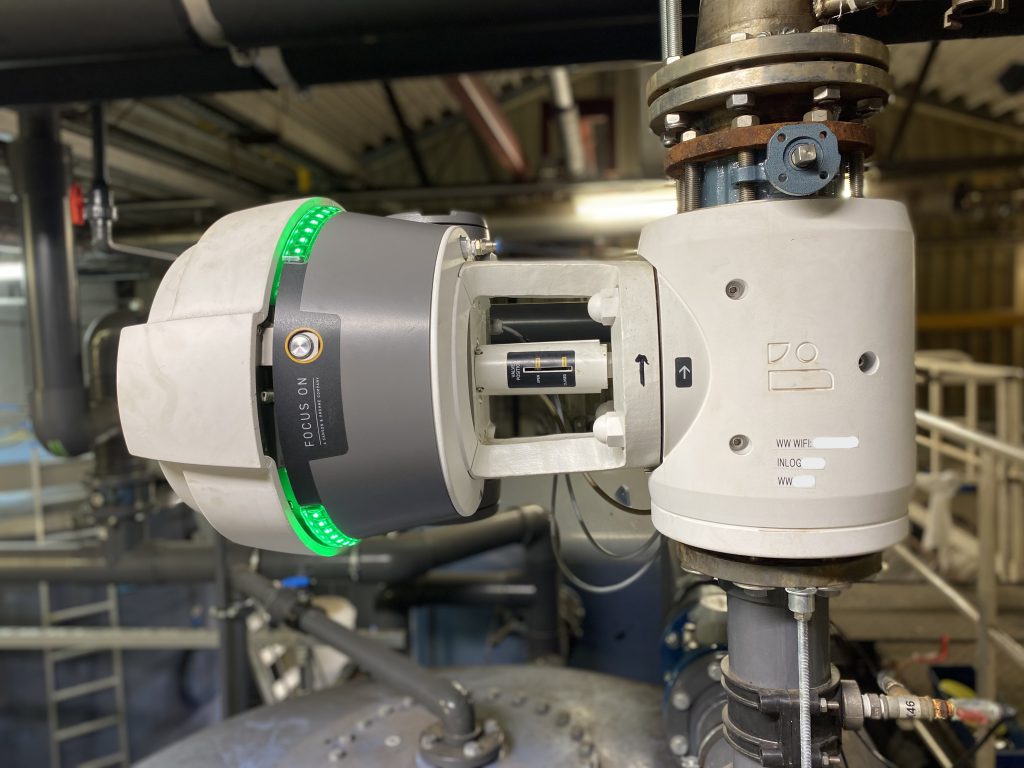

DISCOVERING THE SYSTEM FAULT
As the morning unfolded, our phones rang incessantly, with the maintenance engineer on the other end, urgently seeking answers. Despite our collective brainstorming and efforts, the problem stayed in the system like a puzzle which could not be solved. Notably, FOCUS-1 continued to operate perfectly, adding an extra layer of perplexity to the situation.
After methodical exploring all possibilities, a breakthrough emerged for the customer: FOCUS-1 was not at fault. The diagnostics of FOCUS-1 showed healthy function of FOCUS-1 with an alarm displaying a “deviation on the setpoint” which pointed in a different direction. Armed with real live data from the built-in pressure sensors, it was possible to calculate the flow based on the pressure drop across the valve. This calculation revealed that the flow rate of 64 m3/h perfectly aligning with a 0.6 bar pressure drop when 100% open. It turned out that the source of the issue wasn’t the information-providing device, but rather an element remaining tight-lipped about its role. The search for the trouble maker continued!

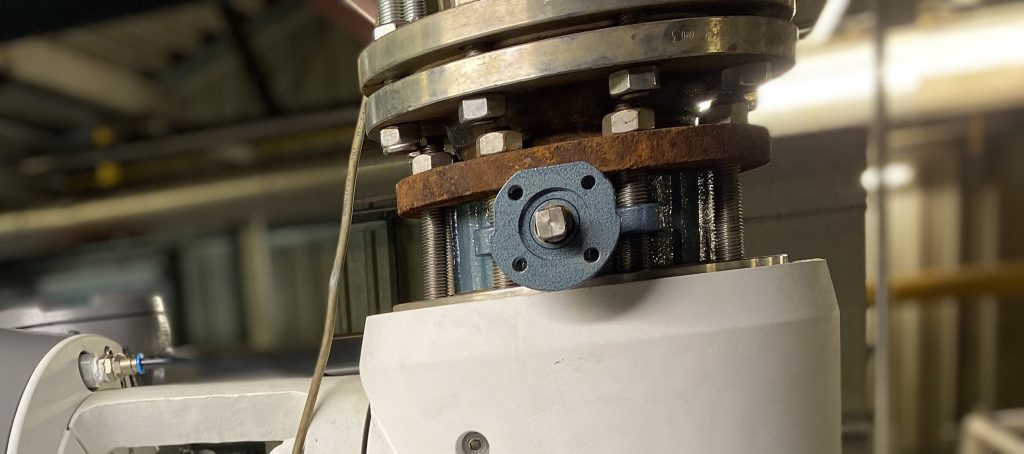
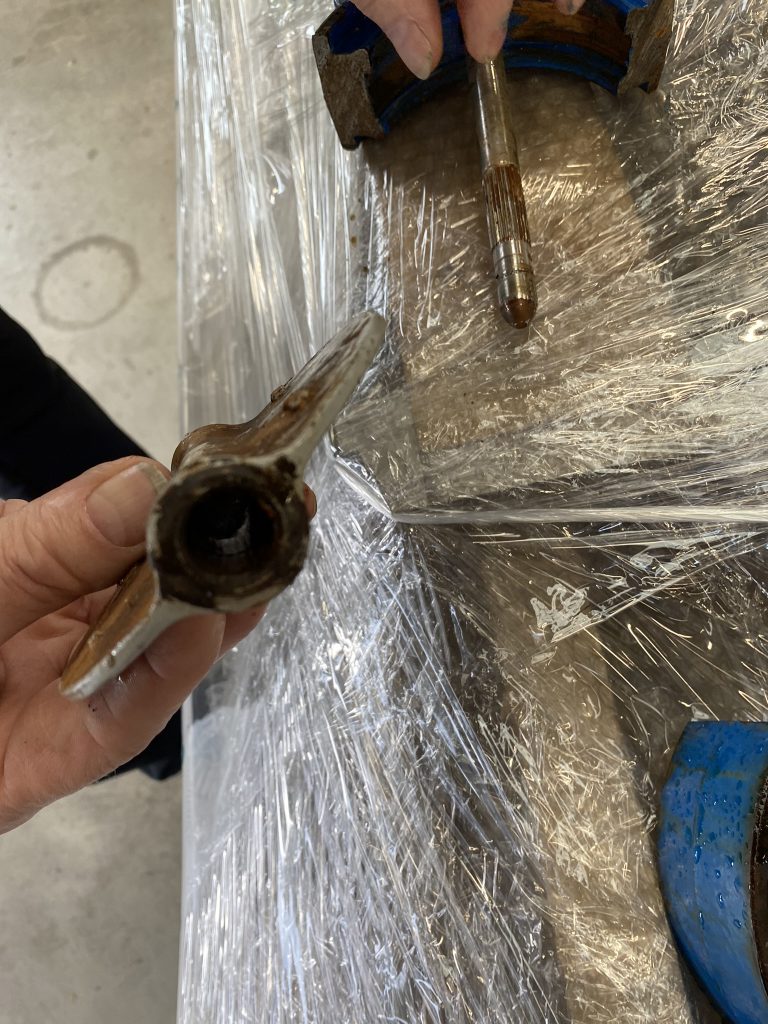
THE PROCESS SITUATION
In front of FOCUS-1, a duty full pump tirelessly operated, and after FOCUS-1 a shut-off valve with 20-meter stretch of straight pipe leading directly to the boiler. Togheter with the maintenance engineer we checked-boxed every component in this line:
- Was the pump responsible for the flow issues? Absolutely not, it performed perfectly.
- Were there any obstructions downstream of FOCUS-1 in the pipeline? Absolutely none; the pipeline remained spotless.
- So, what came under suspicion? The butterfly valve. Indeed, it held the key to unravelling the mystery.
THE PROBLEM MAKER
The aged and unsteady butterfly valve’s thread was detached from the jagged shaft, causing it to spin uncontrollably. This seemingly innocuous twist of fate led to FOCUS-1 fully opening while the butterfly valve stubbornly maintained its erratic stance, creating a backpressure that restricted the flow, preventing it from reaching the threshold of 100 m3/h. A silent saboteur, the butterfly valve sounded no alarms, and the positioner (which was removed in the picture) obediently followed the device’s unpredictable spin in the pipeline.
CONFIRMING WITH THE DATA
Now, you must be eager to know: what did the data reveal within FOCUS-1’s computer? With FOCUS-1’s remarkable ability to archive and save data for an impressive 14 months, we embarked on a journey to our customer’s site, eager to extract insights from these digital log’s records.
Within the data logs, we observed FOCUS-1 diligently carrying out its designated role. It hadn’t faltered in its duty; instead, it had identified the issue in our customer’s system. The recorded measurements had deviated significantly from the norm. While a 100% reading typically indicates a robust 100 m3/h flow, it now exposed a meagre 64 m3/h even at full throttle. Equipped with this newfound knowledge, we prepared to enhance our customer’s detection capabilities, ready to spot anomalies and potential failures within other components of the system.
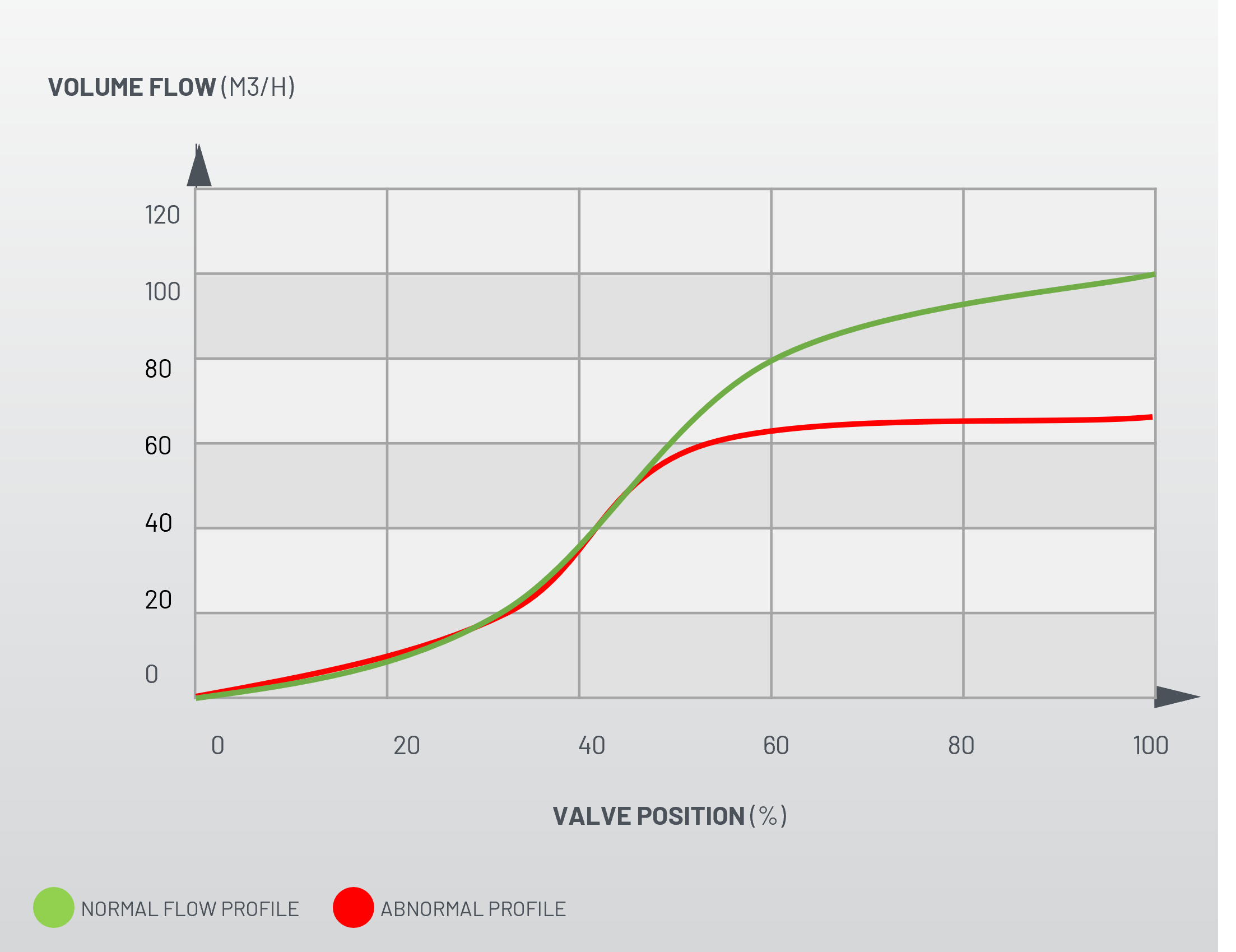
A FRIENDLY ADVICE FOR OUR CUSTOMER
As we delved deeper into the data, we found out that the valve was cavitating more then with the design data was proposed. Changes in process data can create these situations. With the data from FOCUS-1, the customer has the possibility to adjust their system to prevent damage to the butterfly valve. To address this issue and prevent a recurrence scenario we recommended relocating the butterfly valve further upstream, shielding it from harmful effects of cavitation
We share this insight to underline the importance of data-driven decisions in system maintenance and to encourage similar preventative approaches in your operations for enhanced efficiency and longevity.
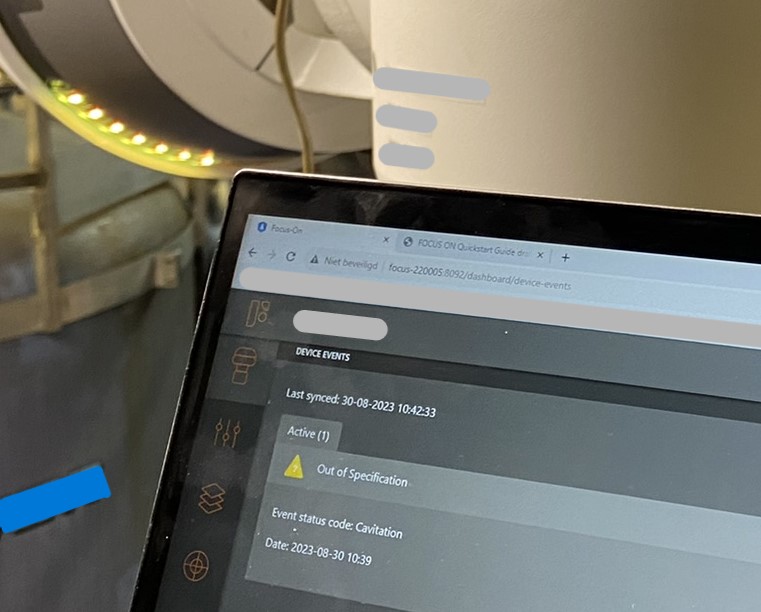

THE ULTIMATE TAKE AWAY
This article highlights a fundamental truth: Information is the cornerstone of decisive action. In a recent event, doubts were cast on a device — a device that has been faithfully providing information. All that was required was trust in its outputs.
Interpreting this trusted information is crucial. It allows us to identify and pinpoint problems accurately. Nonetheless, imagine having a butterfly valve that could signal its status. Such a feature would simplify the process of diagnosing the issue.
Information transcends mere raw data. It is, indeed, the most critical component. It ensures processes operate seamlessly and supports well-informed maintenance decisions.
The FOCUS-1 Solution
Introducing FOCUS-1, your guiding beacon in such scenarios. It doesn’t just empower you with information; it also acts as a guardian, alerting you to potential issues. Rest assured; our foolproof system is designed to avoid false alarms. How do we achieve this? Through our integrated digital twin, where each measurement and component serves as a redundancy, ensuring the most reliable central hub of information. This sets us apart from traditional valves and measurements. Always remember, we stand beside you every step of the way There is noneed to delve into complex algorithms or create decision models yourself – when you embrace FOCUS-1, you’re embracing trust and reliability for your entire setup.
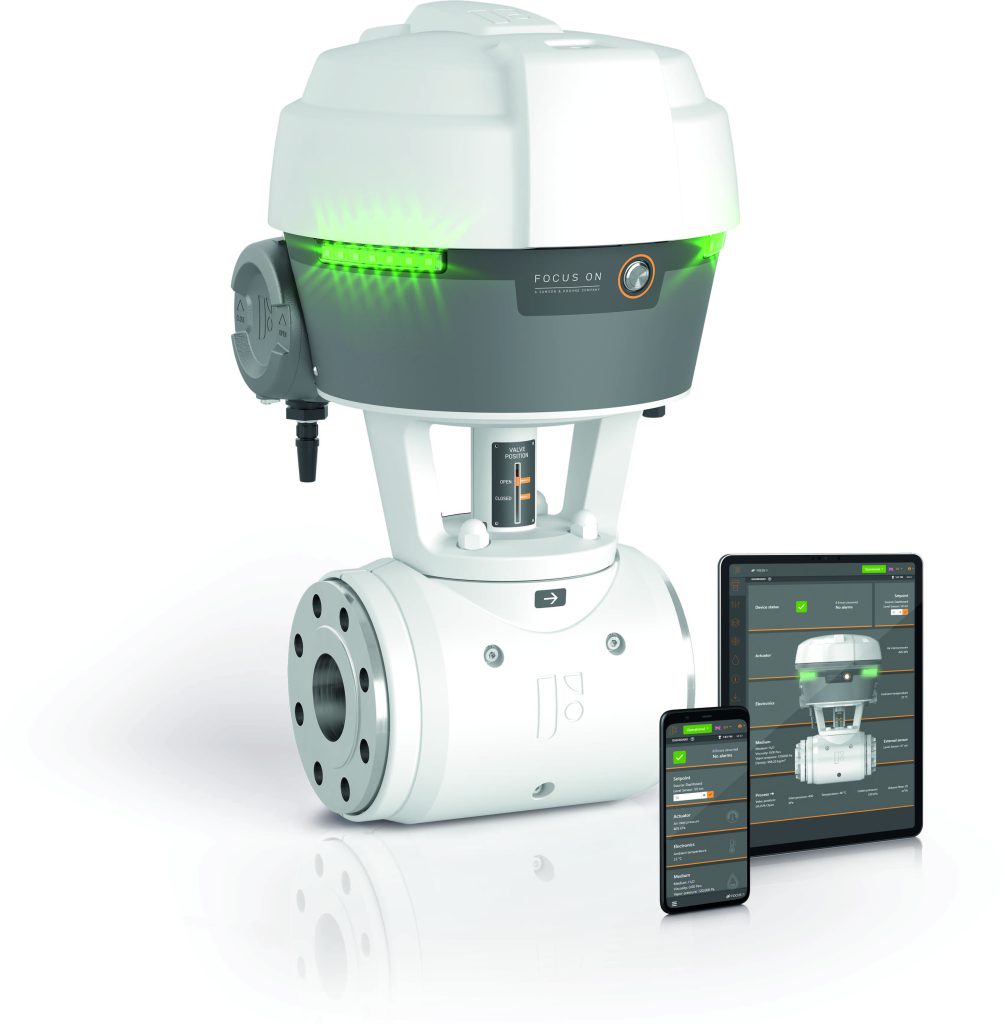
FOCUS-1
- An All-In-One solution features, control valve, flowmeter, pressure and temperature sensors
- All components are standard SAMSON & KROHNE Devices successfully used for decades
- All sensors are designed redundantly


